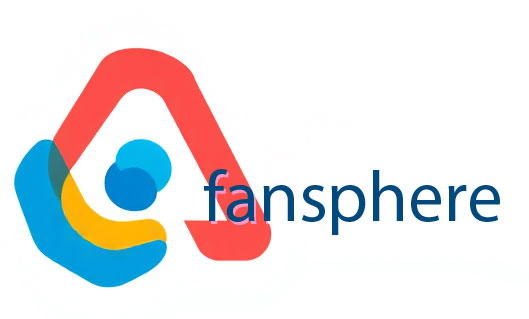Remember those wild predictions from sci-fi movies? The flying cars, the robots doing our chores, the virtual reality escapes? Well, buckle up, buttercup, because some of that futuristic fantasy is creeping into our everyday lives faster than you can say “beam me up, Scotty.” It’s not quite the polished, utopian vision of yesteryear’s films, but the basic concepts are proving surprisingly resilient. Wie könnte die virtuelle Realität in Zukunft die Realität ersetzen?
The Rise of the Machines (That Aren’t Sentient…Yet)
Robots aren’t exactly stealing our jobs (yet!), but they’re certainly changing the way we work. From automated warehouses fulfilling our online orders at lightning speed to surgical robots performing delicate procedures with superhuman precision, robotics is making a huge impact. While we’re not quite at the level of C-3PO or R2-D2, the advancements in AI and machine learning are paving the way for increasingly sophisticated robots that can adapt and learn. Think of self-driving cars – still a little rough around the edges, but they are already navigating our streets, albeit cautiously.
And it’s not just on the factory floor or in operating rooms; these advancements are impacting our homes in more subtle ways. Smart home tech, from voice-activated assistants like Alexa and Google Assistant to self-learning thermostats, is bringing the convenience of automation into our everyday lives. These are the building blocks of the “smart homes” we’ve seen on TV for decades, proving that even the seemingly small innovations can add up to a big shift in how we interact with our environment.
Virtual Reality: Beyond the Gaming Console
VR used to be the exclusive domain of video game enthusiasts, but its potential applications are rapidly expanding beyond the realm of entertainment. In healthcare, VR is being used to create immersive therapies for patients with phobias or PTSD. In education, it offers engaging and interactive learning experiences that can bring history to life or simulate complex scientific processes. And in design and architecture, VR allows clients to “walk through” their future homes or offices before a single brick is laid.
While we haven’t quite reached the level of fully immersive, indistinguishable virtual worlds depicted in “Ready Player One,” the technology is advancing at a breakneck pace. The improvements in resolution, processing power, and haptic feedback are making the experience more realistic and engaging with each passing year. The blurring lines between virtual and real experiences are exactly what many sci-fi stories have explored, and we’re living through the early chapters of that story now.
The Internet of Things: A Connected World
The Internet of Things (IoT) – the interconnected network of everyday devices – is another example of sci-fi becoming reality. From smartwatches monitoring our health to refrigerators ordering groceries when supplies run low, the IoT is creating a world where our devices communicate and interact with each other seamlessly. This interconnectedness has enormous potential to improve efficiency, safety, and convenience. Just imagine the impact on things like smart cities—a concept thoroughly explored in sci-fi—where traffic is managed efficiently, energy consumption is optimized, and public services are more responsive.
However, the increased connectivity also brings with it concerns about data privacy and security, something that many sci-fi narratives have warned us about. As more and more devices are connected to the internet, it’s imperative to address these issues to ensure that the benefits of the IoT outweigh the risks.
Space Exploration: One Giant Leap
Space exploration has always been a fertile ground for science fiction, and the recent resurgence of private space companies is bringing us closer to realizing some of those long-held dreams. While we haven’t yet colonized Mars (although Elon Musk remains optimistic!), the advancements in rocket technology and reusable spacecraft are making space travel more accessible and affordable. The potential for asteroid mining, space tourism, and even establishing permanent settlements on the Moon or Mars are becoming increasingly plausible.
Think about the challenges depicted in countless space operas – resource management in a harsh environment, the psychological impact of prolonged isolation, and the ethical considerations of planetary colonization. These are not just plot devices; they are real challenges that scientists and engineers will need to address as we venture further into the cosmos.
The Ethical Questions Remain
It’s important to note that the future isn’t just about technological breakthroughs; it’s also about how we choose to use those breakthroughs. Sci-fi has often served as a cautionary tale, exploring the potential downsides of unchecked technological advancement. Artificial intelligence, genetic engineering, and even virtual reality raise profound ethical questions that we need to grapple with now, before it’s too late.
Will AI surpass human intelligence and potentially pose an existential threat? What are the ethical implications of gene editing technology? How do we ensure that virtual reality is used responsibly and doesn’t lead to social isolation or addiction? These aren’t just theoretical questions anymore; they are real challenges that we’ll need to address as we continue to push the boundaries of technological innovation.
So, while flying cars might still be a ways off, the rapid pace of technological advancement suggests that many of science fiction’s predictions may well become realities sooner than we think. The key is to approach this future with both excitement and a healthy dose of caution, ensuring that we develop and utilize technology responsibly and ethically.

























Kommentar hinzufügen